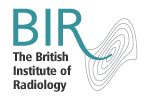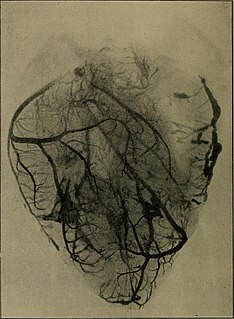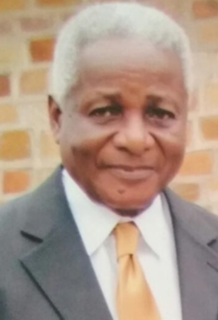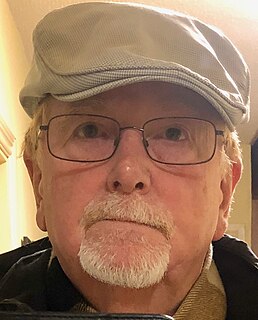The erg is a unit of energy equal to 10−7 joules. It originated in the centimetre–gram–second (CGS) system of units. It has the symbol erg. The erg is not an SI unit. Its name is derived from ergon (ἔργον), a Greek word meaning 'work' or 'task'.

Ira Remsen was a chemist who, along with Constantin Fahlberg, discovered the artificial sweetener saccharin. He was the second president of Johns Hopkins University.
Microcalcifications are tiny deposits of calcium salts that are too small to be felt but can be detected by imaging. They can be scattered throughout the mammary gland, or occur in clusters.

Radical mastectomy is a surgical procedure involving the removal of breast, underlying chest muscle, and lymph nodes of the axilla as a treatment for breast cancer. Breast cancer is the most common cancer among women today, and is primarily treated by surgery, particularly during the early twentieth century when the mastectomy was developed with success. However, with the advancement of technology and surgical skills, the extent of mastectomies has been reduced. Less invasive mastectomies are employed today in comparison to those in the past. Nowadays, a combination of radiotherapy and breast conserving mastectomy are employed to optimize treatment.
The Christie NHS Foundation Trust in Withington, Manchester, manages the Christie Hospital, one of the largest cancer treatment centres of its type in Europe. The Christie became a NHS Foundation Trust in 2007 and is also an international leader in cancer research and development, home to the Paterson Institute for Cancer Research.
Carmen Dillon was an English film art director and production designer who won an Oscar for the Olivier version of Hamlet (1948).

The British Institute of Radiology (BIR) is a radiology society and charity based in London, United Kingdom. It is the oldest institute of its kind in the world, forming on 2 April 1897.

Prof Hans Petterson FRSFor HFRSE RSAS (1888–1966) was a 20th century Swedish physicist and oceanographer.
Gulielma Lister was a British botanist and mycologist, and was considered an international authority on Mycetozoa.

Elizabeth Rona was a Hungarian nuclear chemist, known for her work with radioactive isotopes. After developing an enhanced method of preparing polonium samples, she was recognized internationally as the leading expert in isotope separation and polonium preparation. Between 1914 and 1918, during her postdoctoral study with George de Hevesy, she developed a theory that the velocity of diffusion depended on the mass of the nuclides. As only a few atomic elements had been identified, her confirmation of the existence of "Uranium-Y" was a major contribution to nuclear chemistry. She was awarded the Haitinger Prize by the Austrian Academy of Sciences in 1933.

Dr Dawson Fyers Duckworth Turner FRSE, FRCPE (1857-1928) was a British pioneer of radiology and patron of the arts, who died of radiation related cancer.
John Webster Lowson Spence MD LRCP LRCS was a Scottish x-ray pioneer and an early victim of radiation poisoning. His name is one of 14 British professionals listed on the Monument to the X-ray and Radium Martyrs of All Nations, which was erected in 1936. In the words of his gravestone: he died that others might live.

The Monument to the X-ray and Radium Martyrs of All Nations is a memorial in Hamburg, Germany, commemorating those who died due to their work with the use of radiation, particularly X-rays, in medicine. It was unveiled on the grounds of St Georg Hospital, on 4 April 1936 by the Deutsche Röntgengesellschaft.
Sir Ernest Rock Carling (1877–1960) was a British surgeon, war veteran and pioneering radiologist best known for his association with Westminster Hospital.

George Carver Clerk, was a Ghanaian botanist and plant pathologist. A professor and later, an emeritus professor at the University of Ghana, Legon, he also focused his research on West African mycology and ecology. Clerk, along with his academic contemporary Ebenezer Laing (1931–2015), was one of Ghana's earliest practitioners of botany as a scientific discipline, in addition to his pioneering role as a plant pathologist in West Africa. In 1973, G. C. Clerk became a Fellow of the Ghana Academy of Arts and Sciences.

George Harold Arthur Comyns Berkeley was an obstetric physician, gynaecological surgeon and medical writer. Berkeley was most notable along with William Blair-Bell and Sir William Sinclair for creating the British College of Obstetricians and Gynaecologists. Berkeley was also noted for his writing collaborations with Victor Bonney, the book A Textbook of Gynaecological Surgery that is still considered a medical classic. It was as teacher that he excelled.

Michael Dominic Richard Guiry, is an Irish botanist, who specialises in phycology (algae). See for example the articles. He is the founder and director of the algal database, AlgaeBase.

Leslie Robert Shepherd was a British nuclear physicist. He was involved in the design and operation of the experimental Dragon reactor, which used helium as a coolant. He was also an advocate of space exploration, serving as the president of the British Interplanetary Society and the International Astronautical Federation.










